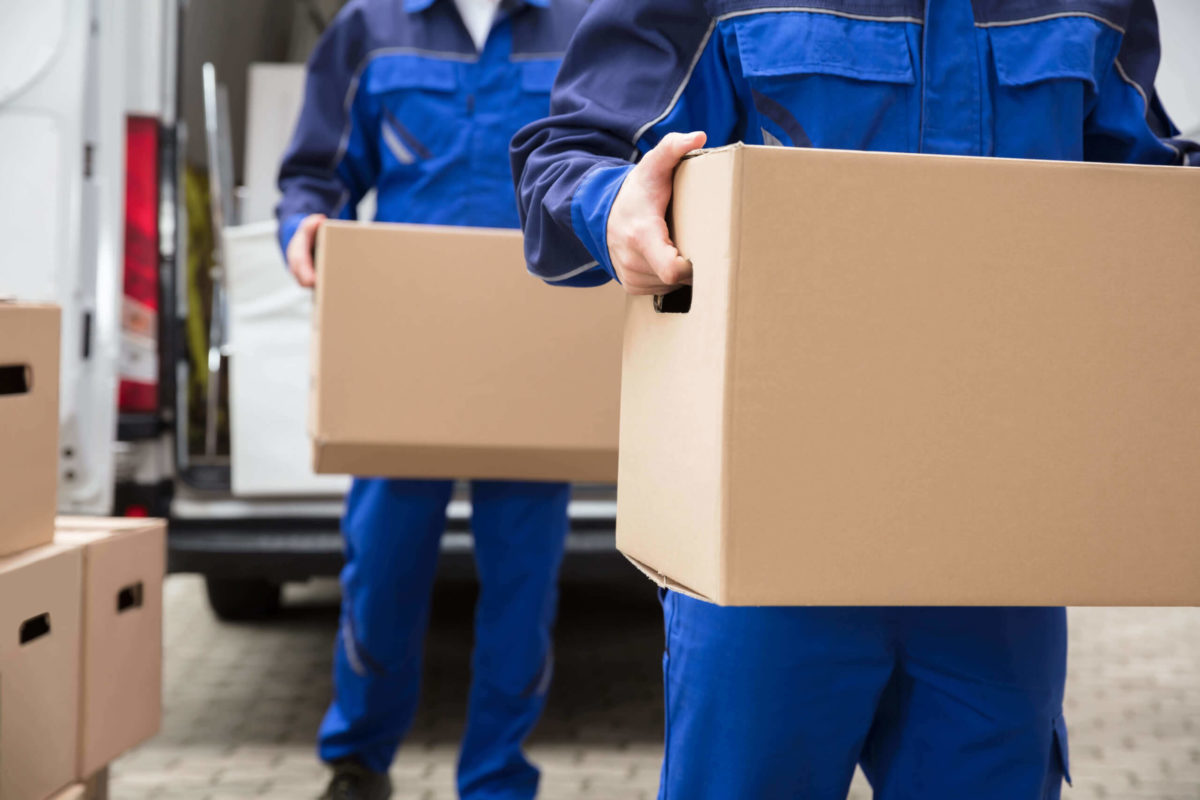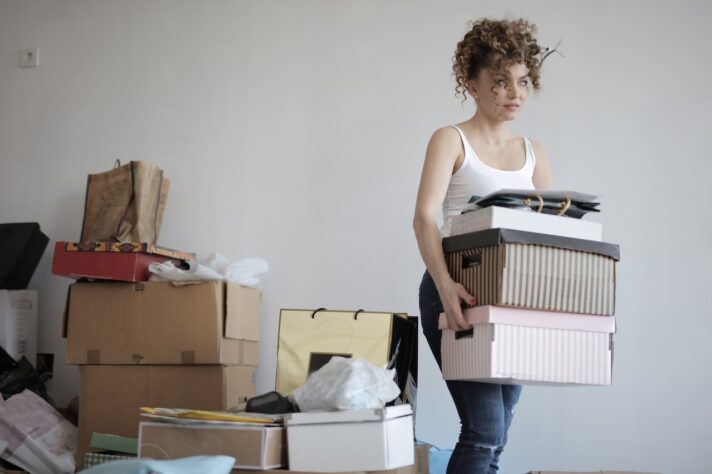When relocating, understanding the importance of storing hangers is crucial. Doing so prevents tangles and potential damages, streamlining unpacking and organization. The process involves selecting suitable supplies, boxing up your goods, and then clearly labeling these crates. If you are looking for expert assistance, look through cross-country moving companies to ensure a hassle-free relocation.
How to Pack Hangers for Moving: A Comprehensive Guide
When it’s time to relocate, even the seemingly simple task of figuring out how to pack hangers for moving can become daunting. The wrong approach can lead to tangled messes, damaged clothing rods, or wasted space. With our comprehensive guide, you’ll navigate this aspect of your relocation with ease, ensuring your goods arrive at your future destination organized and intact. Let’s dive into the efficient ways to handle this overlooked moving challenge.


What is the Importance of Properly Packing Hangers
Even the best hangers can become a tangled mess when packed improperly, which can lead to so much wasted time and potential damage. Bent or broken ones not only incur replacement costs but can also ruin clothes if they snag or deform them. Beyond the material concerns, methodical packing reflects an overall approach to moving, where every detail, no matter how small, is given its due importance, ensuring a seamless and efficient relocation.
Preventing Tangles and Damages During Transit
Tangles can quickly turn unpacking into a tedious and frustrating task, costing you precious time and energy. More so, tangled rods can become bent or broken, rendering them useless.
Even worse, if heavy clothing pieces are left on them, they can become wrinkled, stretched, or damaged. Try to ensure that they are neatly organized to secure not only their functionality but that the items they hold remain in pristine condition.
Saving Time During Unpacking Process
The relocation benefits of meticulous boxing-up become exceptionally clear during the unboxing phase. By dedicating a bit of effort and thought in this stage, especially with items like hangers, you set the stage for a faster, more efficient unpacking after your relocation.
When your items are neatly organized and free from tangles, they can be quickly placed into closets or wardrobes without the hassle of detangling or assessing for damage. This streamlined process not only speeds up the settling-in phase but also reduces the relocation stress and fatigue, allowing you to feel at home in your new space much sooner.
Follow the video below for some ideas on how to organize your closet after relocation.
The Power of Organization and Structured Simplicity
Packing organization is the bedrock of a smooth and easy relocation. Boxing up with a clear system in place ensures that everything has its designated spot both during transportation and upon arrival.
When clothing rods are neatly arranged and packed, they’re ready for immediate use in the new space, reducing clutter and chaos. Moreover, an organized strategy offers a mental roadmap, aiding in setting up rooms methodically.


How to Pack Hangers When Moving Cross-Country – Step-By-Step Guide
Packing these items can seem straightforward, but it can become problematic if not done methodically. Firstly, improperly packed goods and prolonged jostling during long-haul moves can lead to wasted time during the unpacking process.
Secondly, the wear and tear on the boxing-up supplies over longer distances necessitates a precise stringing strategy to safeguard your items. Lastly, neglecting any step in the guide can snowball into larger issues, making adherence to the process not just beneficial but essential for a stress-free relocation.
Choosing the Right Packing Materials
The importance of quality packing materials cannot be stressed enough. Cheap or substandard supplies may compromise the safety of your items, leading to potential damages and added costs.
Investing in high-quality materials not only ensures the physical safety of your belongings but also provides peace of mind during the stressful moving process. Here is the list of different packing materials needed to safeguard your items:
- Double-walled cardboard boxes in various sizes,
- Bubble wrap for cushioning,
- Tissue and packing paper for wrapping items and filling voids,
- Stretch wrap for bundling items together,
- Durable tape for sealing the boxes,
- Scissors or a box cutter for opening and adjusting boxes,
- Permanent markers for labeling boxes,
- Labeling stickers for a streamlined handling process,
- Foam peanuts or crumpled newspaper for added cushioning.
Preparing Hangers for a Seamless Boxing Up Process
Before embarking on the boxing-up journey, it’s essential to prepare your clothing rods adequately. Start by cleaning each hanger to remove dust or any residues. This not only ensures a fresh start in your new location but also prevents dirt from transferring onto other items. Once cleaned, begin the sorting process.
Grouping similar objects together makes the whole process more streamlined and efficient. For instance, grouping wooden hangers separately from wire or plastic ones can simplify the setting up of your closet in your future space. This way, you will know exactly what hanger to reach out for when hanging your silky blouse or favorite blazer.
Strategies for Packing Hangers into Crates
To understand how to pack hangers in a box, start by employing layering and positioning strategies. Nest similar items together, ensuring that they align uniformly, then lay them flat at the base of the box in layers, alternating their direction for optimal fit. If you have access to specialized clothing rod boxes, they’re an excellent choice. After all, they are tailored to accommodate their unique shapes, offering added protection and organization.
Securing and Labeling Boxes is a Must
Using the correct taping methods ensures that the contents inside remain protected and contained. Start by applying tape to the bottom flaps of the box, ensuring they overlap for added strength. When the box is filled, tape the top flaps similarly, reinforcing corners and edges as needed.
Beyond securing, labeling is equally crucial. Properly labeled boxes not only facilitate easy identification of their contents but also provide handling instructions, ensuring boxes are placed and stacked appropriately during transport and delivered straight to their designated rooms.


Tips and Tricks for Packing Hangers Efficiently
Here are some invaluable relocation tips and tricks you should include in your boxing-up routine. First, consider bundling similar items together using rubber bands, tape, or zip ties. Not only does this make the whole thing faster, but it also prevents tangles and saves space. Secondly, use the natural hook of the hanger to your advantage by slotting them into each other, ensuring they align uniformly.
If you have padded or velvet variants, slip a piece of cardboard or foam between bundled sets to retain their shape. Also, consider repurposing clothing rods by using them to wrap and hold rolled clothes or linens, maximizing space utility. Lastly, if you’re storing them in a standard box, remember to alternate their direction in layers for a snug fit.
Moving
Our mission is to bring high quality, long distance moving services to every customer.
Packing
Our expert moving teams are trained to ensure the safety of your personal belongings.

Storage
Cross Country Moving Company is the most trusted name in auto industry in the country.
Utilizing Household Items as a Creative Storage Solutions
Repurposing household items for creative storage solutions is a sustainable and innovative approach to transporting these items. Old bed sheets or pillowcases can be transformed into makeshift pouches, ensuring these items stay bundled together.
Similarly, a tall laundry hamper can be repurposed to stack clothing rods vertically, while reusable grocery bags can hold a few of them snugly, making them easier to transport. For those with a hefty collection of these items, tying them together using rubber bands or zip ties and then storing them inside a large plastic bin with a lid can keep them from falling out and tangling.


What Are Some Common Mistakes You Should Avoid
Some common relocation mistakes to avoid include boxing-up procrastination, which can result in last-minute rushes and throwing your stuff into random crates. Many underestimate the quality or amount of supplies needed for safe transportation, which leads to inadequately protected items.
Another error is failing to label boxes, making the unboxing and handling process a guessing game. Overloading boxes is a frequent blunder, making them prone to breaking and harder to move, which usually results in belongings being lost or damaged. Finally, using a vacuum seal and making it a snug fit can cause clothing rods to warp, change their shape, and potentially break under pressure.


Cross Country Moving Company Will Make Your Relocation a Breeze
At Cross Country Moving Company, we understand the nuances and challenges of relocation. As experienced long-distance movers, our expertise is tailored to ensure a seamless transition from one home to another, no matter the miles in between.
Our comprehensive long-distance moving services cover everything from meticulous planning of your relocation to secure shipping of your belongings to another state. Additionally, our professional packing services are designed to alleviate the stress of preparing for the big relocation, guaranteeing each item is boxed up with care and precision. Contact us today, and let’s hang up those relocation worries together.
FAQ
Can I Use Regular Boxes for Packing Hangers?
Yes, regular crates can be used for relocating these items. However, it’s essential to ensure the box is sturdy enough to hold them without tearing. To prevent tangling, group your items together and secure them with rubber bands or ties.
Layering them with packing paper or bubble wrap can minimize movement inside the box. While specialized crates are optimal for their shape and design, with careful organization, regular boxes can serve the purpose efficiently.
How Should I Handle Expensive or Delicate Hangers?
For expensive or delicate goods, it’s crucial to exercise extra caution. Begin by wrapping each item individually using bubble wrap or tissue paper. Avoid stacking them directly on top of each other. Instead, layer them with cushioning materials. Label the boxes as ‘fragile’ to ensure careful handling. Storing them separately from heavier items can further reduce the risk of damage during transit.
Where Can I Find the Proper Supplies for Packing Hangers?
Finding the right supplies is essential for a smooth relocation experience. Trusted local moving or packing supply stores often stock specialized boxes and wrapping materials tailored for hangers.
Additionally, many companies offer boxing-up supplies as part of their services. Online retailers are another convenient option, providing a wide range of supplies with customer reviews. Always prioritize quality to ensure your goods are protected during transit.
Can Cross-Country Moving Services Assist in Packing Hangers?
A professional cross-country moving service is designed to handle all aspects of a relocation, including the intricate task of storing hangers. By hiring a reputable long-distance moving company, you can ensure that your belongings are packed with utmost care and expertise. Such professional services aim to make the relocation process smoother and free from any potential hitches, ensuring all belongings reach their destination safely.
Are There Special Boxes Designed for Storing Hangers?
While many people use regular boxes, there are specialized hanger boxes available that provide added protection and keep these items organized during a move.
How Many Hangers Can Fit in a Standard Moving Box?
The number varies depending on hanger size and type, but typically, a medium-sized crate can fit 20-30 standard plastic objects.
Should I Keep Clothes on Hangers When Moving?
Some people prefer to keep lightweight clothing on their hangers and simply group them, tape them together, and cover them with a clothing or plastic bag for protection. However, heavier garments should be removed to prevent these items from warping.
How Do I Prevent Metal Hangers From Rusting or Bending During a Move?
It’s advisable to group them together, secure them with rubber bands, and wrap them in plastic or bubble wrap to prevent moisture exposure and bending.
Is It Worth Packing Old or Damaged Clothing Rods?
Consider decluttering before a move. Damaged or unused items might be more of a burden than they’re worth. It’s often better to donate them to charity, recycle them, or get rid of them and invest in new ones post-relocation.
What's the Best Way to Pack Different Types of Hangers, Like Wood, Plastic, or Wire?
Each hanger type requires specific care. Wooden ones can be bulky and need spacing, while wire ones should be grouped to avoid tangling. Plastic ones are more forgiving but should still be bundled for organization.
Is It Advisable to Shrink-Wrap Hangers Together?
Shrink-wrapping can keep these items together, but be careful not to wrap them too tightly, as that could lead to them losing their shape or getting damaged in transport.







